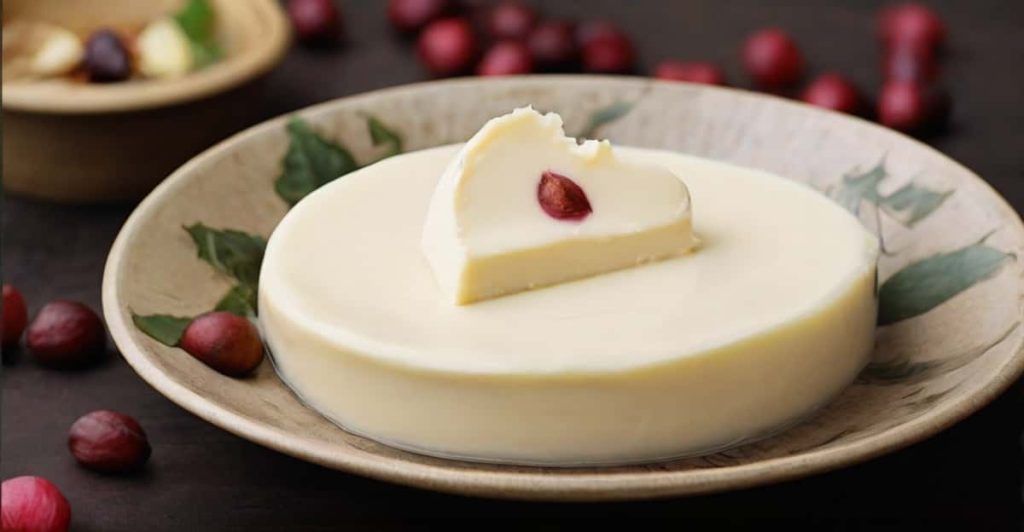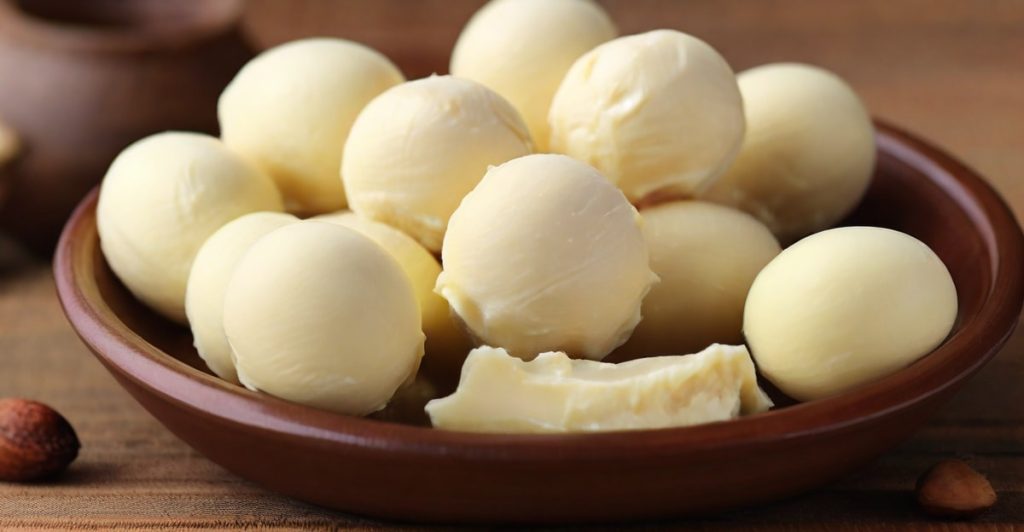Kokum vs Shea Butter: Benefits, Uses, and How It Compare
Welcome to our comprehensive guide comparing kokum butter vs. shea butter for skincare. In this article, we delve into the properties, benefits, and uses of these two popular natural moisturizers. Kokum butter, derived from the seeds of the Garcinia indica tree, and shea butter, extracted from the nuts of the shea tree, are renowned for their hydrating properties and versatility in skincare products. We’ll explore their similarities and differences, discussing which skin types each butter is best suited for. Whether you’re dealing with oily, acne-prone skin or dry, sensitive skin, understanding the unique characteristics of kokum and shea butter will help you make informed choices for your skincare routine.
What is kokum butter?
Kokum butter, derived from the seeds of the Garcinia indica tree, is a natural emollient. It’s renowned for its rich moisturizing properties, making it a popular ingredient in skincare products. Kokum butter soothes dry skin, aids in skin cell regeneration, and promotes elasticity. Its high content of essential fatty acids helps restore the skin’s moisture barrier, leaving it soft and supple. Additionally, kokum butter is non-comedogenic, making it suitable for all skin types, including sensitive and acne-prone skin. Its light texture allows for easy absorption, providing long-lasting hydration without greasiness.

What is shea butter?
Shea butter, extracted from the nuts of the shea tree, is a natural moisturizer. It hydrates the skin deeply, keeping it soft and smooth. Shea butter also contains vitamins and antioxidants, which nourish and protect the skin. It helps in reducing inflammation and soothing irritation, making it suitable for sensitive skin. Shea butter is versatile and used in various skincare products like creams, lotions, and balms. It absorbs quickly without leaving a greasy residue, providing long-lasting hydration. Shea butter is beneficial for improving skin elasticity and minimizing the appearance of wrinkles and stretch marks. Overall, it’s a cherished ingredient for healthy, glowing skin.

Compare kokum vs shea butter
Comparing kokum and shea butter reveals their unique qualities for skincare. Kokum butter, sourced from Garcinia indica seeds, offers lightweight hydration ideal for oily and acne-prone skin. It prevents pore congestion, promoting a balanced complexion. In contrast, shea butter, extracted from shea tree nuts, provides intense moisturization, perfect for dry and sensitive skin types. Its nourishing properties soothe irritation and reduce inflammation. Both butters are versatile, used in various skincare products like creams and lotions.
Kokum butter’s quick absorption suits those seeking non-greasy hydration, while shea butter’s richness deeply nourishes parched skin. Understanding these differences helps tailor skincare routines to specific needs. Moreover, both kokum and shea butter contribute to managing common skin issues like dryness and inflammation. Incorporating them into skincare regimens can lead to healthier, more radiant skin. Whether you opt for kokum or shea butter, both offer natural solutions for enhancing skin health and appearance, reflecting the beauty of nature’s bounty in skincare.
Potential benefits and uses
Kokum butter and shea butter offer numerous potential benefits and versatile uses in skincare. Kokum butter, sourced from the seeds of the Garcinia indica tree, boasts rich moisturizing properties, making it ideal for hydrating dry skin. It aids in skin cell regeneration and elasticity, promoting a supple complexion. Non-comedogenic, it suits all skin types, including sensitive and acne-prone skin, without clogging pores. Shea butter, extracted from shea tree nuts, is another prized moisturizer. Packed with vitamins and antioxidants, it nourishes and shields the skin from environmental stressors.
Its anti-inflammatory properties soothe irritation and reduce redness, making it gentle on sensitive skin. Both butters find applications in various skincare products, such as creams, lotions, and balms. Their lightweight textures ensure quick absorption, leaving behind no greasy residue. Moreover, they aid in improving skin elasticity, diminishing wrinkles, and minimizing stretch marks’ appearance. Whether used individually or combined, kokum butter and shea butter are cherished ingredients for achieving healthy, radiant skin.
Similarities and differences between
Kokum butter and shea butter share similarities as natural moisturizers with diverse skincare applications. Both extracted from tree seeds, kokum from Garcinia indica and shea from the shea tree—offer deep hydration, enhancing skin softness and suppleness. However, their compositions differ, with kokum butter known for its lighter texture, quick absorption, and suitability for sensitive and acne-prone skin due to its non-comedogenic nature. Conversely, shea butter, rich in vitamins and antioxidants, nourishes and protects the skin, exhibiting anti-inflammatory properties ideal for soothing irritation and reducing redness.
While both butters are utilized in skincare products like creams, lotions, and balms, their distinct qualities cater to various skin needs. Kokum butter’s emphasis lies in moisturizing and promoting skin elasticity, while shea butter excels in providing intensive nourishment and defense against environmental aggressors. Despite their variances, kokum butter and shea butter remain cherished ingredients, valued for their contributions to achieving healthy, radiant skin.
Best skin types for kokum vs shea butter
Kokum butter and shea butter serve distinct purposes for different skin types. Kokum butter is most suitable for oily and acne-prone skin. Its non-comedogenic properties prevent pore blockages, making it an excellent choice for those prone to breakouts. Kokum butter provides lightweight hydration without exacerbating oiliness, helping to maintain a balanced complexion. On the other hand, shea butter is ideal for dry and sensitive skin types.
With its rich moisturizing properties, shea butter deeply hydrates parched skin, offering relief from discomfort and reducing inflammation. It nourishes the skin with essential vitamins and antioxidants, promoting overall skin health. While kokum butter targets oiliness and acne, shea butter focuses on soothing and moisturizing dry, sensitive skin. Both butters can be beneficial additions to skincare routines, catering to specific skin concerns and needs.
Summaries
In summary, the comparison between kokum butter vs. shea butter highlights their unique qualities and suitability for different skin types. Kokum butter, renowned for its non-comedogenic properties, is an excellent choice for those with oily and acne-prone skin, providing hydration without clogging pores. On the other hand, shea butter’s luxurious moisturizing capabilities make it a perfect match for individuals with dry and sensitive skin, offering relief from discomfort and inflammation. Understanding the distinct benefits of each butter empowers individuals to tailor their skincare routine to address specific concerns effectively.
Moreover, both kokum and shea butter can play a role in managing common eyelid conditions like blepharitis and chalazion. Their nourishing properties can help soothe irritation, reduce inflammation, and promote healing, providing much-needed relief for those affected by these ailments. By incorporating kokum or shea butter into your skincare regimen, you not only enhance the overall health and appearance of your skin but also address specific concerns like blepharitis and chalazion in a natural and effective manner.
FAQs❔
♨ Kokum butter and shea butter derive from extracting natural vegetable fats found in the seeds of various plants. Specifically, kokum butter originates from the seeds of the Garcinia indica tree, while shea butter comes from the nuts of the African shea tree.
♨ The main differences between kokum butter and shea butter lie in their composition and properties. Kokum butter has a higher melting point, making it more stable in warm temperatures. Additionally, kokum butter possesses a lighter texture and exhibits less greasiness when compared to shea butter. Shea butter, on the other hand, is richer in vitamins and has a higher moisturizing ability.
♨ The choice between kokum butter and shea butter for skincare depends on individual preferences and skin types. Kokum butter is suitable for oily and acne-prone skin due to its lighter texture and non-comedogenic properties. Dry and sensitive skin types benefit more from shea butter, given its rich moisturizing benefits.
♨ While kokum butter and shea butter have similar properties, they may not always be interchangeable in skincare formulations. Kokum butter’s higher stability makes it a preferred choice in products intended for warmer climates or those requiring a longer shelf life. Products targeting intense hydration and nourishment often use shea butter due to its richer texture.
♨ Most people generally consider both kokum butter and shea butter safe for all skin types. However, individuals with specific allergies or sensitivities should perform a patch test before using these ingredients extensively.





